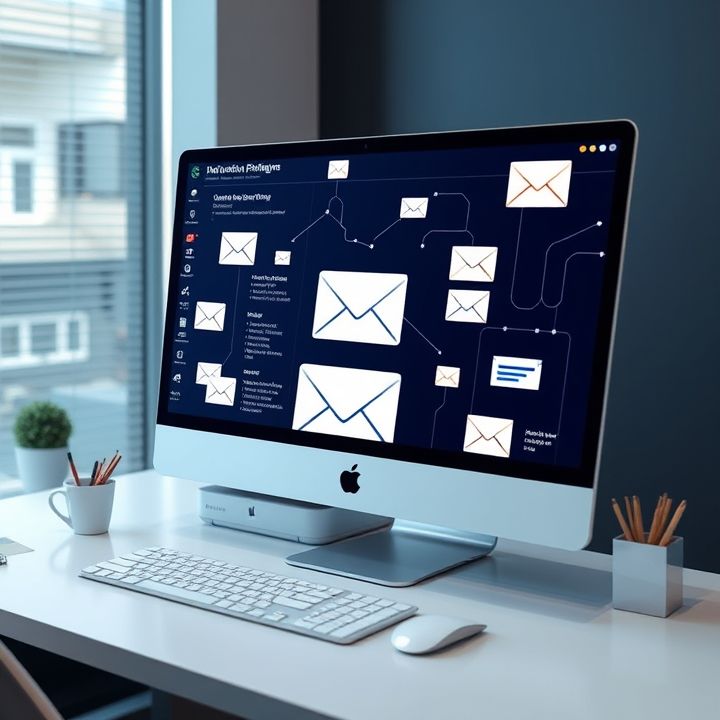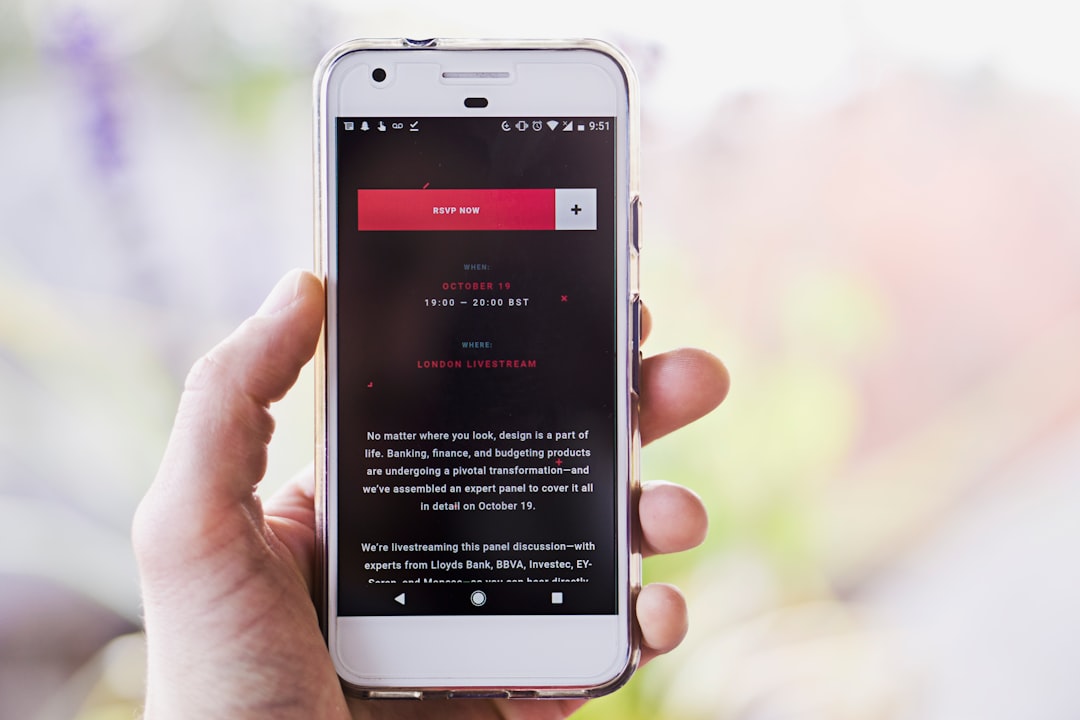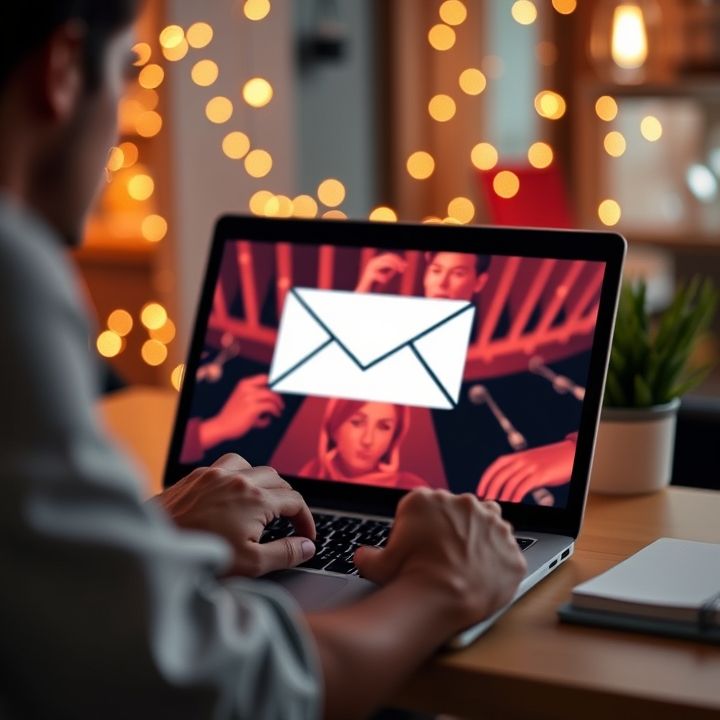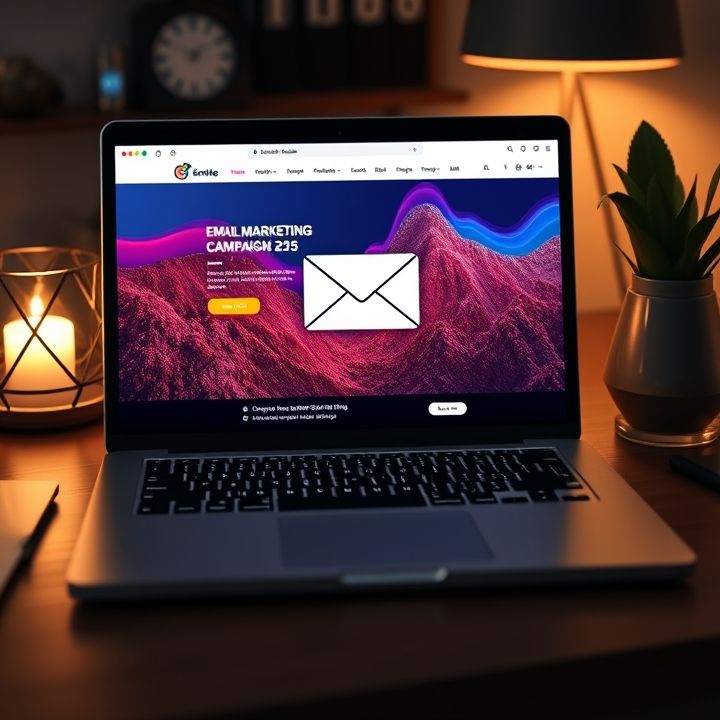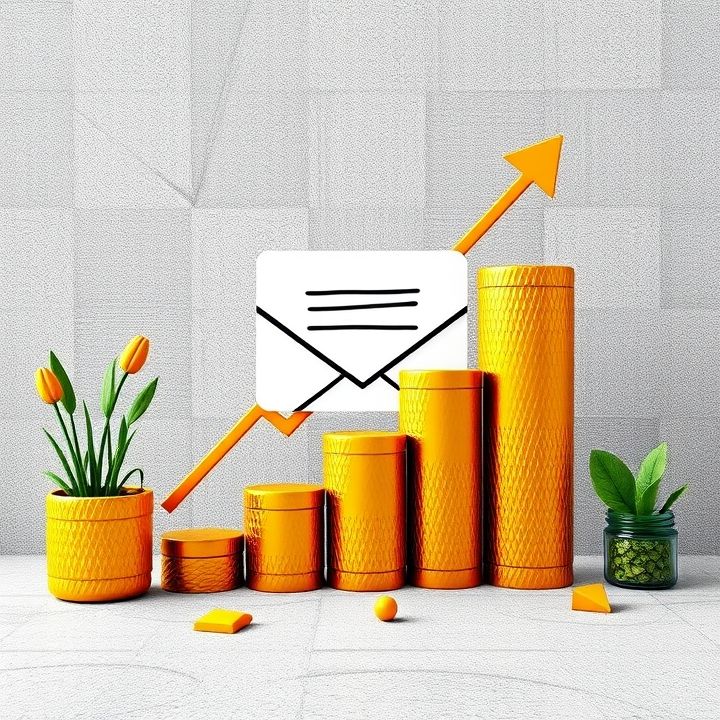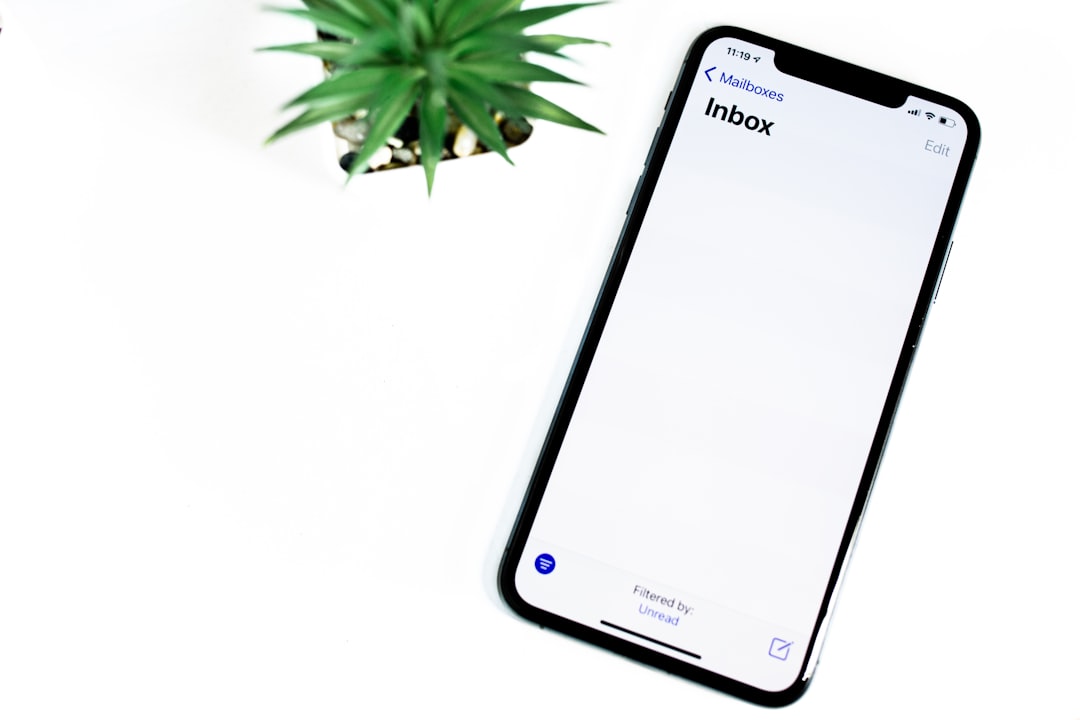Table of Contents
- Introduction
- Building emotional connections through storytelling
- Using customer success stories to build trust
- Crafting a narrative that aligns with your brand
- Enhancing email engagement through captivating stories
- Segmenting your audience to personalize storytelling
- Leveraging data to inform and refine your story
- Incorporating visual elements to support your narrative
- Measuring the impact of storytelling on email marketing performance
- Conclusion
- Frequently Asked Questions
Introduction
Unleashing the transformative power of storytelling in your email marketing strategy can elevate your connection with audiences and drive unparalleled engagement. Amidst the sea of information inundating inboxes daily, impactful storytelling becomes a beacon, cutting through the chaos and capturing attention. But how do you harness this power to not only convey information but to entertain, inspire, and persuade?
Imagine being able to speak directly to your audience’s emotions, painting vivid images in their minds and leaving a lasting impression with every email you send. By weaving narratives that align with the values and aspirations of your subscribers, you create resonance and strong brand loyalty. Unlock the art of storytelling in email marketing and watch as your open rates, click-through rates, and subscriber retention soar to new heights!
In this guide, discover how to craft compelling stories that seamlessly integrate into your email marketing campaigns, creating not just subscribers, but brand advocates.
| Storytelling Element | Impact on Email Marketing |
|---|---|
| Emotional Connection | Enhances engagement by connecting on a personal level |
| Visual Imagery | Captivates attention and aids in information retention |
Building emotional connections through storytelling
Storytelling is a powerful tool in email marketing because it helps build emotional connections with your audience. By weaving narratives into your emails, you create a relatable and engaging experience for readers. Stories resonate because they mirror real-life experiences and emotions, making your brand more personable and trustworthy.
The key to effective storytelling in email marketing is authenticity. Share genuine stories about your brand’s journey, customer experiences, or how your products have made a difference. This authenticity fosters a sense of trust and community, encouraging readers to see your brand as more than just a business.
To incorporate storytelling effectively, consider structuring your emails like a story arc: introduce a problem, present the journey to resolution, and conclude with a satisfying outcome. Use descriptive language to paint vivid pictures and evoke emotions. Personal anecdotes or testimonials can also enhance the narrative by providing tangible and relatable experiences. Additionally, segment your audience and tailor stories to align with their specific interests or pain points.
In essence, storytelling turns ordinary marketing messages into captivating tales that capture attention and inspire action, ultimately fortifying the bond between your brand and your readers.
Using customer success stories to build trust
Using customer success stories in email marketing is a powerful way to build trust and credibility with your audience. By sharing real-life examples of how your product or service has positively impacted customers, you provide tangible evidence of value, which can be more persuasive than traditional marketing messages. Success stories humanize your brand and make it relatable, as potential customers often see themselves in the stories being shared.
To effectively incorporate customer success stories, start by identifying compelling stories that highlight the key benefits of your offerings. Reach out to satisfied customers and request their permission to share their stories. It’s important to ensure these stories are authentic and resonate with your target audience’s pain points and goals. Structure the stories in a narrative format, focusing on the challenge faced by the customer, the solution provided, and the successful outcome. This format keeps the audience engaged and encourages them to visualize the potential benefits for themselves.
Incorporating visuals, such as before-and-after photos or video testimonials, can also enhance the impact of these success stories. By consistently sharing these narratives across your email campaigns, you foster a sense of community and trust that can drive customer loyalty and conversions.
Crafting a narrative that aligns with your brand
Crafting a narrative that aligns with your brand is essential for successful email marketing. A well-crafted story can make your messages more engaging, memorable, and authentic. It involves creating a narrative that resonates with your audience, reflects your brand’s values, and encourages customer loyalty. To start, identify the core aspects of your brand identity, such as your mission, values, and unique selling points. This will help you develop a storytelling framework that aligns with your overall brand strategy.
Once you have a solid understanding of your brand, think about the message you want to convey and the emotions you want to evoke in your audience. Use relatable characters, compelling plots, and vivid imagery to bring your brand’s story to life. Additionally, ensuring consistency across all communication channels helps reinforce your brand’s narrative, creating a cohesive experience for your audience.
Remember, authenticity is key. Your audience can easily spot a manufactured story, so be genuine and transparent in your storytelling approach. Foster a connection by addressing your audience’s pain points and aspirations, and showcase how your brand can positively impact their lives. By doing so, you’ll create a narrative that not only aligns with your brand but also leaves a lasting impression on your audience.
Enhancing email engagement through captivating stories
Incorporating storytelling into email marketing efforts can significantly enhance engagement by resonating with the audience on an emotional level. Stories have the power to captivate and connect, transforming mundane marketing messages into compelling narratives that hold the reader’s attention. By weaving in relatable characters, real-life scenarios, and vivid imagery, marketers can craft emails that not only inform but also inspire and engage recipients.
To effectively incorporate storytelling, begin by understanding your audience’s interests and pain points. Tailor your content to address these aspects, creating a story arc that highlights how your product or service can provide solutions or add value. Use personal anecdotes or customer success stories to build credibility and rapport.
Additionally, maintaining a conversational tone makes your emails feel more human and approachable, ensuring your message is well-received.
Keep the narrative concise and focused, using clear calls-to-action to guide readers through the story towards the desired outcome, whether it’s a click, a purchase, or further engagement with your brand. By integrating storytelling into email marketing, businesses can create meaningful relationships with their audience, encouraging loyalty and driving positive results.
Segmenting your audience to personalize storytelling
Segmenting your audience is a crucial step in personalizing storytelling for your email marketing efforts. By understanding the diverse interests, needs, and behaviors of your audience, you can tailor your message to resonate better with different segments. Effective segmentation allows marketers to craft stories that are not only engaging but also relevant to each subset of the audience. This relevance enhances the emotional connection, driving higher engagement and conversion rates.
One approach to segmenting your audience is by analyzing demographic data such as age, gender, and location. However, moving beyond demographics, diving into psychographics and behavioral data can provide deeper insights. For instance, understanding your audience’s buying habits, interests, and pain points can help shape a narrative that speaks directly to their experiences and expectations.
Once segments are identified, marketers can develop storyline variations that cater specifically to each group. Use personalization techniques such as addressing recipients by their name and incorporating references to their past interactions or purchases. These small yet significant touches make the audience feel valued and understood.
Ultimately, audience segmentation helps in delivering personalized, impactful storytelling that fosters a strong connection and builds loyalty with your brand.
Leveraging data to inform and refine your story
Leveraging data to inform and refine your storytelling in email marketing is crucial for crafting narratives that resonate with your audience. Data provides insights into customer preferences, behaviors, and engagement patterns, allowing marketers to tailor their stories effectively. By analyzing metrics such as open rates, click-through rates, and conversions, marketers can discern which narratives captivate their audience and which fall flat. This process involves continuously testing different story elements, such as tone, length, and structure, to identify what works best.
Once data highlights a successful narrative, marketers can amplify this by integrating customer feedback and personalizing content to meet specific audience segments. This personalization makes the storytelling more relatable and relevant, fostering a deeper connection with the audience. Additionally, data can inform the timing and frequency of emails, ensuring that stories reach the audience when they are most receptive.
Moreover, leveraging data helps in identifying new trends and topics that may be of interest to your audience, enabling you to adapt your storytelling strategies accordingly. By making data-driven decisions, you can enhance the effectiveness of your storytelling in email marketing, thereby boosting engagement and driving desired outcomes.
Incorporating visual elements to support your narrative
Incorporating visual elements into your email marketing can significantly enhance your storytelling efforts, making your message more engaging and memorable. Visuals like images, videos, infographics, and GIFs can support your narrative by providing context and clarity to your audience. These elements can help break down complex information into digestible parts, making it easier for readers to connect with your content.
Images, when used effectively, can evoke emotions and set the tone of your message. They help create a cohesive story that complements your written content. For instance, an image of a satisfied customer using your product can reinforce a testimonial or success story. Videos are equally powerful, offering a dynamic and immersive way to narrate a story, demonstrate a product, or deliver a message. Infographics are effective tools for summarizing data or presenting step-by-step guides in a visually appealing way.
To effectively incorporate visual elements, ensure they align with your brand identity and story. They should enhance, not overwhelm, the primary message of your email. Always consider the layout and how visuals integrate with your text, ensuring a seamless flow that guides the reader through your narrative.
Measuring the impact of storytelling on email marketing performance
Measuring the impact of storytelling in your email marketing efforts involves analyzing key performance metrics that reflect audience engagement and campaign effectiveness. One critical metric is the open rate, which indicates how enticing your subject line and preview text are, often enhanced by the promise of a compelling story. Additionally, click-through rates can provide insight into how well the narrative drives recipients to take action, guiding them from curiosity to conversion. To effectively gauge the impact, it’s essential to conduct A/B testing by sending different story-driven variations to segments of your audience and observing which version results in higher engagement.
Another valuable indicator is time spent reading emails, which can indicate how captivating and relevant your storytelling is to the reader. Moreover, tracking conversions or the specific actions recipients take after reading your email gives a definitive measure of storytelling success. Employing storytelling in email marketing isn’t just about engaging your audience—it’s about converting that engagement into meaningful outcomes. By consistently monitoring and analyzing these metrics, marketers can refine their storytelling approach to better resonate with their audience and enhance overall marketing performance.
Conclusion
Incorporating storytelling into your email marketing strategy can truly revolutionize the way your brand connects with its audience. By weaving compelling narratives, you not only capture attention but also forge genuine emotional bonds that elevate trust and loyalty. The art of storytelling allows you to transform mundane messages into memorable experiences, making readers more invested in your brand’s journey. Utilizing customer success stories, aligning narratives with brand values, and segmenting your audience for personalized content all contribute to crafting impactful emails that resonate on a deeper level.
Furthermore, leveraging data insights to refine your stories and incorporating visuals can significantly enhance engagement and comprehension. By consistently measuring your storytelling’s effectiveness through key performance metrics, such as open and click-through rates, you ensure that your narratives are not just engaging but also driving meaningful outcomes. Embrace the power of storytelling to create captivating email campaigns that inspire action and foster lasting relationships between your brand and your audience.

